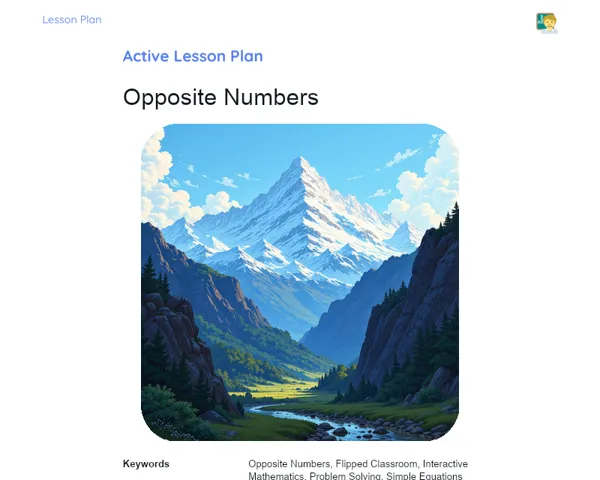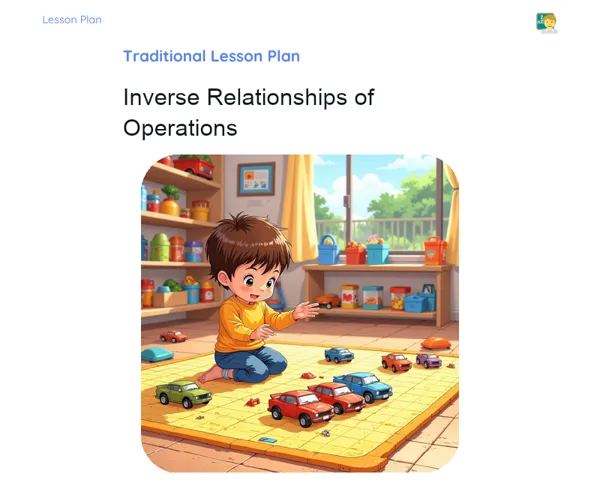Lesson Plan | Lesson Plan Iteratif Teachy | Volume: Relationships with Cubes
| Keywords | Volume, Unit cubes, Mathematics, 5th grade, Minecraft, 3D modeling, Digital education, Collaboration, Civil engineering, Content creation, Active pedagogy, Technology, Interactivity, Logical reasoning, Virtual environments |
| Resources | Cell phones or tablets with internet access, Minecraft app, Computers or tablets with 3D modeling software (Tinkercad, SketchUp), Access to social media platforms (Facebook, Google Classroom, etc.), Video editing tools (iMovie, Canva, etc.), Microphones for podcast recordings, Projectors or screens for presentations, Access to digital presentation platforms (Google Slides, PowerPoint Online) |
| Codes | - |
| Grade | 5th grade |
| Discipline | Mathematics |
Goal
Duration: 10 - 15 minutes
The goal of this stage is to give students a solid understanding of the learning objectives related to calculating volumes using unit cubes. This will support practical activities and help students connect mathematical concepts with real-life problems.
Goal Utama:
1. Understand the relationship between the volume of three-dimensional figures and the use of unit cubes.
2. Develop the ability to calculate the volume of three-dimensional figures by counting unit cubes.
3. Apply knowledge of volume calculation in everyday situations involving three-dimensional figures.
Goal Sekunder:
- Encourage logical and spatial reasoning.
- Promote teamwork through group activities.
Introduction
Duration: 15 - 20 minutes
The objective of this stage is to engage students from the beginning, providing context for the topic of volume with modern examples. This not only sparks interest but also sets the stage for applying knowledge in practical activities during the class. Searching for interesting facts on their phones encourages responsible use of technology and connects learning with the digital landscape.
Warming Up
📱 To start the lesson, explain to students that today they will explore the volume of three-dimensional figures using unit cubes, a concept linked to many everyday life situations, from wrapping gifts to creating structures in building games like Minecraft. Ask students to use their phones to find and share an interesting fact about how volume is relevant in the real world, like in construction or gaming. 💡
Initial Thoughts
1. 🔍 What is volume and how can we visualize it?
2. 🤔 How does using unit cubes help us grasp the volume of three-dimensional figures?
3. 📏 Can you think of everyday situations where knowing how to calculate volume could be handy?
4. 📱 Can you think of a game or app that incorporates the idea of volume?
Development
Duration: 70 - 85 minutes
The goal of this phase is to encourage active and collaborative learning, where students can practically apply the mathematical concept of volume using digital technology. This approach allows them to recognize the relevance of their acquired knowledge in real-world situations while fostering logical reasoning, communication, and teamwork.
Activity Suggestions
Activity Recommendations
Activity 1 - 💻 Minecraft Explorers: Calculating Volumes in the Digital World
> Duration: 60 - 70 minutes
- Goal: Apply the concept of unit volume in a digital environment, fostering creativity and collaboration.
- Deskripsi Activity: Students will use Minecraft to explore and calculate the volumes of various digital constructions. They should build structures using unit cubes and determine the volume of each. Afterward, they will showcase their constructions and calculations on a class-exclusive social media platform.
- Instructions:
-
Divide students into groups of up to 5.
-
Each group must access Minecraft on their devices and create a construction using cubic blocks.
-
While building, students must count and record the number of cubes used in each part of the structure.
-
Groups should create a digital report with screenshots of their constructions, the volume calculations, and a brief description of their process.
-
These reports should be shared in a private class social network, like a Facebook group or Google Classroom, for everyone to view and comment.
Activity 2 - 🏙️ Skyscraper Builders: Volume Challenges in Construction
> Duration: 60 - 70 minutes
- Goal: Develop skills to calculate volume and apply practical knowledge in fields like civil engineering, while promoting the use of 3D modeling technologies.
- Deskripsi Activity: Students will act as civil engineers, designing skyscrapers using unit volume cubes. They will face specific challenges that involve calculating volumes and optimizing space usage. Using online 3D modeling tools, they'll create their projects and calculate the total volume of their constructions.
- Instructions:
-
Divide students into groups of up to 5.
-
Each group must access an online 3D modeling program, such as Tinkercad or SketchUp.
-
Groups will design a skyscraper using cubic shapes, following the volume challenge set by the teacher (e.g., build a structure with a total volume of 5000 unit cubes).
-
As they design, they should calculate and document the volume of each part of the structure.
-
Groups should create a digital presentation with images of their 3D models, volume calculations, and an explanation of how they optimized space.
Activity 3 - 🎥 Mathematical Influencers: Creating Content about Volumes
> Duration: 60 - 70 minutes
- Goal: Enhance understanding of volume and its practical applications through digital content creation, promoting communication skills and technological proficiency.
- Deskripsi Activity: Students will become digital math influencers, creating content to explain the concept of volume using unit cubes. They can choose formats such as videos, podcasts, or social media posts. The created content will be shared with the class for discussion and feedback.
- Instructions:
-
Divide students into groups of up to 5.
-
Each group should select a digital content format: video, podcast, social media post, etc.
-
Groups must write a script explaining the concept of volume using unit cubes, including real-life examples.
-
Once the script receives teacher approval, each group should produce their content using digital tools such as Canva, iMovie, Anchor, etc.
-
Finalized content should be shared on a chosen platform, like YouTube, a private Instagram account for the class, or Google Classroom.
-
Each group should engage with content made by classmates and provide constructive feedback.
Feedback
Duration: 20 - 25 minutes
🎯 Purpose: The feedback stage aims to reinforce students' learning by exchanging experiences and reflections. By sharing their insights and receiving feedback, students gain a deeper understanding of volume and develop skills in communication, collaboration, and critical thinking. This section promotes a supportive learning environment and highlights the practical application of knowledge in everyday life.
Group Discussion
📢 Group Discussion: Use this moment for a meaningful discussion among students, allowing them to share what they learned from the activities. Suggested outline:
- Introduction: 'Today we’ll share our experiences and discoveries as we learned about volumes with unit cubes. Each group will present their constructions and reflections.'
- Group Presentations: Ask each group to present their project (Minecraft, 3D modeling, or digital content) and explain how they calculated the volume.
- Debate: After each presentation, encourage questions and feedback. Use guiding questions to facilitate this interaction.
- Conclusion: 'Let’s reflect on how understanding the concept of volume is useful in various aspects of our lives and discuss new ideas for its application.'
Reflections
1. 🔍 How did using unit cubes improve your understanding of volume? 2. 💭 What were the biggest challenges you faced during the activities, and how did you solve them? 3. 🌍 How could you apply your understanding of volume in other scenarios in your life or future careers?
Feedback 360º
🤝 360° Feedback: Guide students to provide thoughtful and respectful feedback. Explain that every group member should receive at least one compliment about what they did well and one constructive suggestion for improvement. You can lead the class as follows:
- Positive Feedback: 'Identify something your peer did excellently, whether in teamwork, creativity, or grasping the concept.'
- Suggestion for Improvement: 'Offer a respectful suggestion on how your peer can improve in future activities. Be specific.'
- Feedback Exchange: Allow time for everyone to share their feedback orderly, ensuring each student feels heard and valued.
Conclusion
Duration: 10 - 15 minutes
🎯 Purpose: The conclusion stage aims to wrap up the lesson effectively, reinforcing key concepts learned and relating them to real-world applications. By summarizing the class in an enjoyable manner and contextualizing the knowledge gained, the objective is to solidify learning and motivate students to view mathematics as a valuable tool for their daily lives and future careers. 🌟
Summary
🎉 Class Summary: Imagine a world where cubes and blocks unlock geometric secrets! Today, students dived into Minecraft, built digital skyscrapers, and turned into mathematical influencers. They learned to calculate volumes using unit cubes in a fun, practical, and interactive manner. The skills for calculating volumes are no longer just theoretical; they are now embedded in their understanding of the practical and digital world! 🚀
World
🌍 In Today's World: We inhabit a digital era where technology touches nearly every aspect of our lives. From building constructions to designing games, understanding volume is essential. By engaging in Minecraft, 3D modeling, and digital content creation, students witnessed how math applies to everyday situations, making learning relevant to modern times.
Applications
📈 Applications: Knowing how to calculate volume is vital in various fields, such as architecture, engineering, game design, and even organizing personal spaces. Mastering volume calculations aids in optimizing spaces, planning constructions efficiently, and enhancing one's understanding of the surrounding world. These skills not only serve academically but also equip students for future professional and personal challenges. 🏗️


